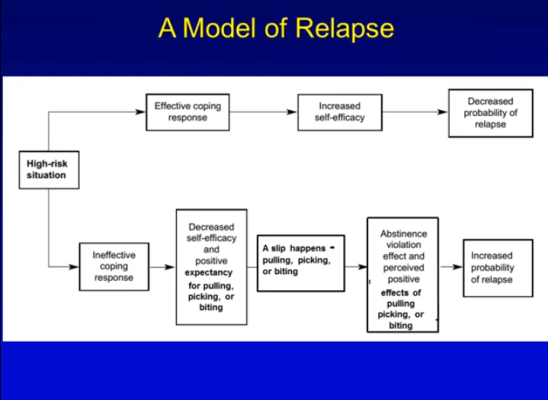Mindful Running for People with Compulsive Hair Pulling Disorder

Online test
Find out the severity of your symptoms with this free online test

Mindful running serves multiple purposes for people with compulsive hair pulling disorder. First, as an aerobic physical exercise, running keeps stress low and anxiety at bay. Second, running is a full-body activity. And third, it helps develop mindfulness skills for use at other times.
Reduce Triggers
Exercise benefits everyone. Research shows it positively impacts stress, anxiety, memory, sleep, mood, and self-esteem. For people with compulsive hair pulling, anxiety and stress can act as triggers for pulling behaviors which instigates the cycle of shame and embarrassment as a result of pulling. A lot of time goes into pulling with a lot more going into taking care of oneself afterward. Consider exercise as a way to reduce stress and feel better.
Part of therapy for hair pulling includes managing stress and anxiety. So many people report a higher frequency of pulling when anxiety is high, and then it is more difficult to control impulses. As the white noise of anxiety increases and starts blaring in the background, the impulse control mechanism that helps someone make a conscious choice not to pull jams up with interference. Think of exercise as a vitamin to keep those anxiety levels low.
Exercise also helps you disengage from activities and distractions. Some people who pull do so without complete awareness. As other things invade your space and your mind, stress levels may start to creep up. If you make an appointment with yourself to get away from the daily activities that threaten your serenity levels, you can look forward to some healthy disengagement.
For some, pulling provides an emotional release, a way to focus on a different type of pain or to soothe strong emotions. Running is a challenge your body may appreciate. When you first start out, you’ll feel muscles you might not realize you had which many runners call a “good sore.” There are multiple running techniques including short sprints that will give you a chance to push you beyond your limits to achieve that emotional release or soothe strong emotions.
Full-Body Engagement
Running requires your entire body which means your hands are not available. Choose a running style based on what you are comfortable with and whether you enjoy a challenge. Some people start off with slow jogging, others on full-out sprints, long-distance running, barefoot running, off-road running, or any other style, but each method requires arms and legs moving synchronously. Whether you run heel-to-toe or with a forefoot strike, it takes concentration and focus on preventing injuries to ankles, knees, and hips. Walking is a heel-to-toe motion, and new runners often use that technique when they start. However, it is not the best technique for injury prevention. It takes focus to learn how to run with your toes hitting the ground first! If you are an experienced runner, try switching techniques.

Another bonus to running is learning to keep a tight abdomen and straight posture. Proper alignment prevents injury. Imagine the following: “…strike the ground with your forefoot first, keep a tight core, knees pointed down, kick the heels up, keep your elbows close to your body…” (Panno, 2018). To keep your body in motion while holding in your core requires intense focus which does not allow for your hands to pull or your mind to think about pulling.
Develops Mindfulness Skills
Mindfulness is a practice that can be frustrating for people who struggle with attention and concentration. Therefore, do something physical to give your mind a break. Engaging in physical activity while learning mindfulness can improve awareness because all senses are occupied in that one activity. Plus, you can take it one step at a time. For example, it is much easier to concentrate on your breathing when running. Match your breathing to your stride to create a rhythm. As you get used to mindful breathing, add another level of awareness such as how your feet touch the ground from the second they engage with the surface to the second your toes leave the surface. Continue in this way until you can focus your attention on the muscles in your body and the way they move together to create motion.
Challenge Yourself
Therapy for people with compulsive hair pulling includes decreasing stress and other triggers as well as building positive habits to counter pulling habits. Running can be used as preventative stress and anxiety manager. Improved self-esteem complements the bonuses of improved mood, better sleep, and healthier body. Substitute running as an emotional release when you feel overwhelmed. Not only will your body thank you, but as you change your pulling habit for a running habit, your mind will thank you.
Reference
Panno, B. (2018). Mindful running: Letting go of mindfulness and finding happiness through running. eBookIt.com.
Online test
Find out the severity of your symptoms with this free online test
Start your journey with TrichStop
Take control of your life and find freedom from hair pulling through professional therapy and evidence-based behavioral techniques.
Start Now



